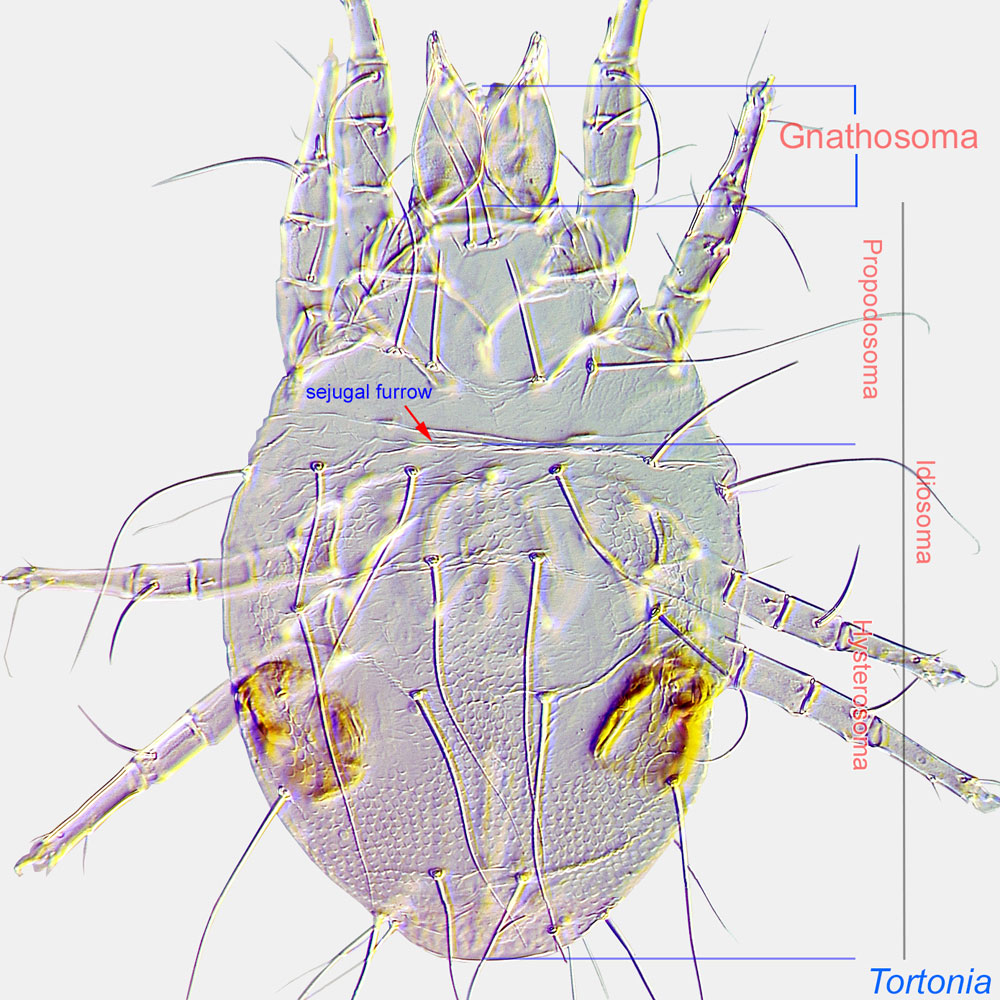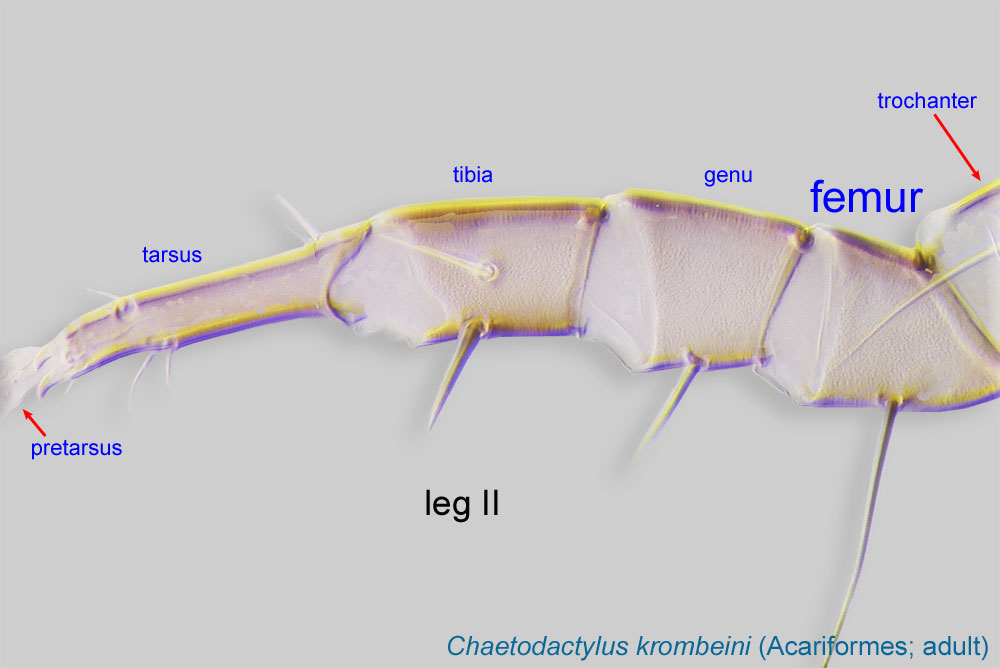lives in bee nests and disperses on bees, but details of biology unknown
Rhinopygmephorus Kurosa, 2001
Superorder Acariformes » Order Trombidiformes » Suborder Prostigmata » Infraorder Eleutherengona » Hyporder Heterostigmata » Family Neopygmephoridae » Genus Rhinopygmephorus
Rhynopygmephorus rhopalomelissae Kurosa, 2001 (=Rhinopygmephorus rhopalomelissae Kurosa, 2001)
Rhynopygmephorus Kurosa, 2001 (original incorrect variant spelling)
Female: Basal part of gnathosomagnathosoma:
Division of body anterior to the propodosoma bearing two pairs of appendages (palps and chelicerae).
 strongly elongated (Fig. 1). Seta d of femurfemur:
strongly elongated (Fig. 1). Seta d of femurfemur:
Leg or palp segment (also known as podomere or palpomere) between genu and trochanter. In ParasitIformes can be subdivided into telofemur and basifemur.
 I modified (wide, tip bent) (Fig. 4). Posterior genital scleritesclerite:
I modified (wide, tip bent) (Fig. 4). Posterior genital scleritesclerite:
A component section of an exoskeleton; a plate forming the skeleton of an arthropod.
very small, rounded (Fig. 5). Pinnaculumpinnaculum:
A subapical, dorsal elevation on tibiotarsus I bearing a distinct cluster of 2-3 rodlike sensory setae. Term is used for Heterostigmata only.
on tibiotarsus I absent (Fig. 6).
This genus includes only one described species, Rhinopygmephorus rhopalomelissae Kurosa, 2001. However, one undescribed species is known from Africa (our data, Fig. 7).
Palaearctic (Japan) and Afrotropical regions
halictid bees of the genus Lipotriches; phoreticphoretic:
Pertaining to phoresy; using another organism (i.e., a host) for dispersal to new habitats. Phoresy can be distinguished from parasitism because feeding typically does not occur during phoresy.
hosts also include bees of the genus Sphecodes (kleptoparasites of Lipotriches)
permanentpermanent:
associated exclusively with bees or their close relative, wasps; cannot live without these hosts